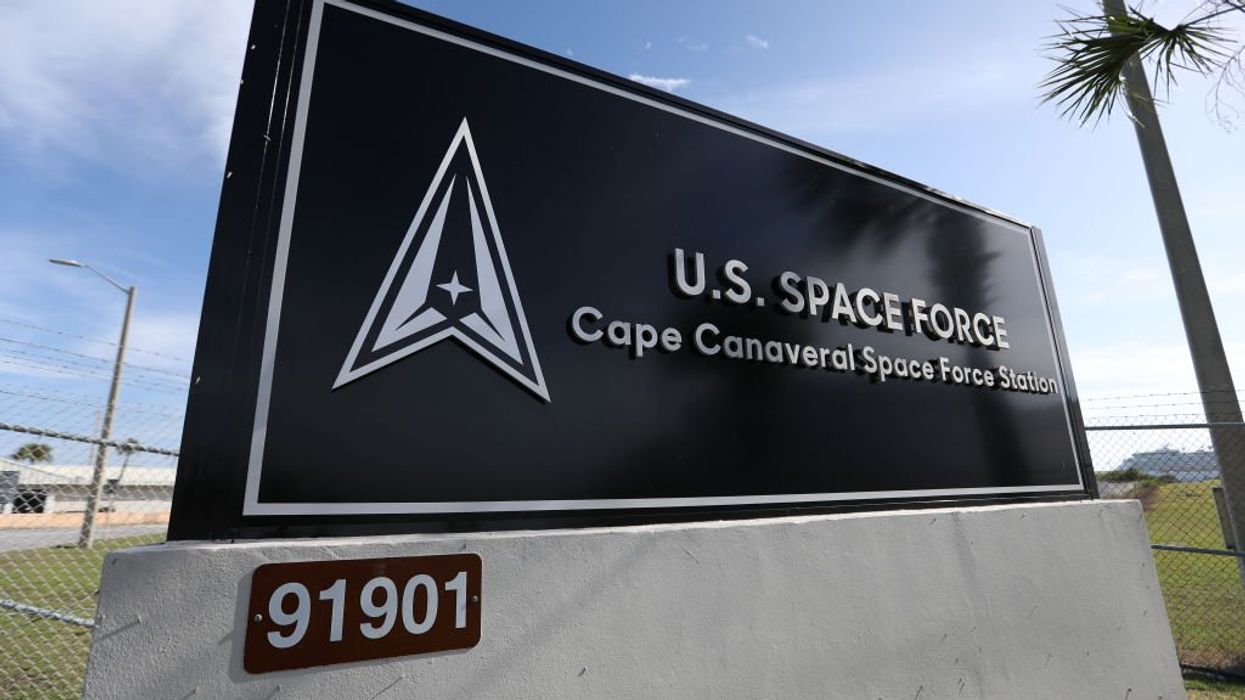
Photo by Yasin Ozturk/Anadolu Agency via Getty Images

A new joint publication guiding the Space Force's operations in space was revealed despite being under an order of "limited distribution." The guidance included the Space Force's areas of responsibility both on Earth and in outer space, as well objectives regarding enemy operations.
The Joint Force operations, obtained by Breaking Defense, codified U.S. Space Command’s operational scope. Such documents typically set the foundational principles for a given military branch, set objectives, and establish agreed-upon concepts and terms.
The documents were obtained despite being subjected to "limited distribution publication" available only "within" the Defense Department. The documents are reportedly neither classified nor marked as controlled unclassified information and were published in August 2023.
The joint publication introduced the term "astrographic," which described Space Command's area of responsibility. The would-be borders of the operations are defined by "altitudes rather than a nations’ borders or latitude/longitudinal coordinates," the document read, specifically noting the area 100 kilometers or 54 nautical miles above sea level.
The documents also stated that the area of responsibility extends into "exgeosynchronous" orbit, which means beyond the Earth orbit, approximately 36,000 kilometers or 19,000 nautical miles out.
This is to include cislunar space and the moon's orbit, as well as Lagrange points. Lagrange points are spots between the orbits of two masses where the orbital pull is balanced.
"Now that we are assigning a responsibility, and we have missions within that area of responsibility, we now are responsible for protecting, defending activities and/or capabilities and things that are happening in that [area], Lt. Gen. John Shaw reportedly said. Shaw was deputy SPACECOM commander at the time and provided comment on the documents.
Also detailed were "space mission areas" for joint actions from the military. These included "offensive and defensive space operations," "surveillance," "reconnaissance," "missile warning," "nuclear detonation detection," and "spacecraft operation" among others.
Offensive space operations were aimed at the “suppression of enemy space capabilities.” This term was coined so that commanders could measure any "incremental progress against an adversary in the domain," according to Lt. Gen. Shaw.
The Space Force team reportedly worked to define the term "space superiority," which they quickly realized was a difficult task.
"We really, really struggled to to be able to measure when you think you have space superiority,” Shaw said. “And we realized that … if the president ever said, ‘So, do you have space superiority?’ we’d have a hard time answering that question."
"You’re not probably ever going to have dominance in all parts of the Earth-Moon system, in the electromagnetic arena as well as the physical arena, at all times," Shaw went on.
"We might be able to deprive an adversary of just enough of this, and just enough of that, and just enough of this — and we can measure that. And then we can say we’ve suppressed their space capabilities to a proper threshold that allows us to now have freedom of maneuver in the domain and in the terrestrial domains."
Like Blaze News? Bypass the censors, sign up for our newsletters, and get stories like this direct to your inbox. Sign up here!
Andrew Chapados